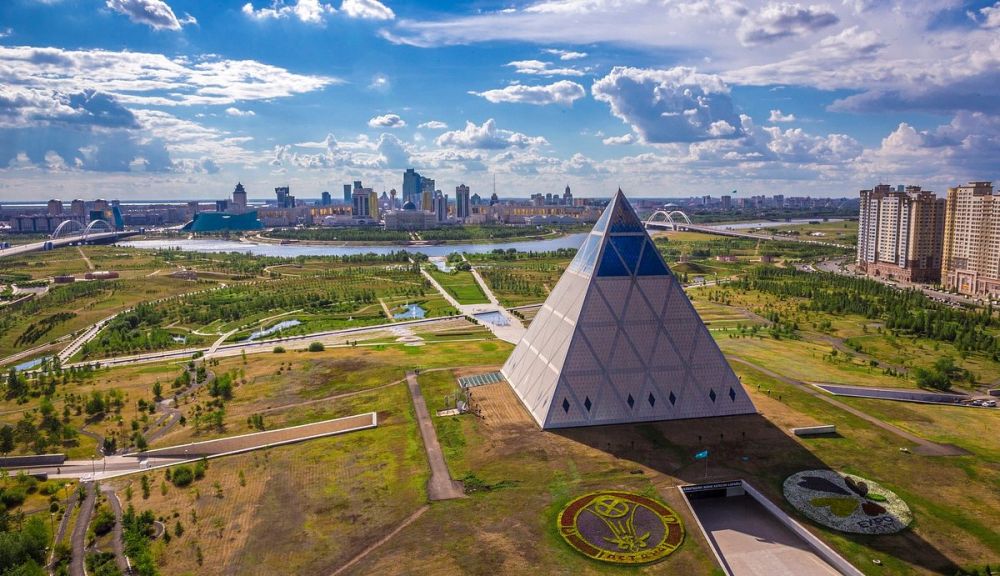

The Palace of Peace and Reconciliation, also known as the Pyramid of Peace and Accord, is a remarkable architectural feat in Nur-Sultan, the capital city of Kazakhstan. Since its inception, it has played a pivotal role in the global tourism landscape of Nur-Sultan, acting not only as a symbol of unity and peace but also as a significant attraction for visitors from all over the world.
Inaugurated in 2006, the Palace was designed by the famed British architect, Sir Norman Foster, to host the triennial "Congress of Leaders of World and Traditional Religions" – an international event dedicated to fostering dialogue among religions. The choice of a pyramid structure has deep symbolic significance, representing both cultural unity and the continuity of ancient wisdom into modern times. Its glass façillage soars 62 meters high, encompassing a variety of spaces including a museum, an opera house, and an observation deck at its apex offering breathtaking views.
Over the years, the Palace of Peace and Reconciliation has become a cultural beacon in Kazakhstan, drawing tourists who are interested in both contemporary architecture and the philosophy of global peace it encapsulates. It stands not just as a tourist attraction, but also as an emblem of Kazakhstan's post-independence identity and its role on the international stage.
Eco-Friendly Practices: Nur-Sultan, alongside its attractions such as the Palace, is leaning into sustainability. Tourists are increasingly looking for destinations that minimize environmental footprints while providing cultural richness.
Experiential Travel: The Palace offers a unique multi-sensory experience. Visitors don't just observe; they participate in educational tours, enjoy performances at the opera house, and engage in dialogue promoting global peace.
Smart Tourism: With advancements in technology, the Palace's operators are utilizing digital tools for immersive virtual tours and interactive experiences, catering to a global audience right from their screens.
Visitors can explore the Palace of Peace and Reconciliation throughout the year, with guided tours available to showcase the building's architecture and the various facilities within. It is recommended to visit during the early morning or late afternoon for the best natural lighting and to avoid crowds.
Each level of the pyramid is dedicated to a different purpose: the lower levels focusing on human history and culture, and the upper echelons devoted to the congress and spiritual harmony. The panoramic views of Nur-Sultan from the top are a must-see for every tourist.
The Palace has improved accessibility over the years, catering to tourists with different needs and proving that inclusive tourism is a vital aspect of its offering. Transport links have been enhanced, and the infrastructure modified to ensure that the Palace remains a popular destination for years to come.
The Palace of Peace and Reconciliation is more than just an architectural wonder; it is a dynamic and evolving monument that reflects both the history and the aspirations of Kazakhstan. As tourism trends continue to evolve, this iconic pyramid will undoubtedly adapt and continue to capture the hearts and minds of those who visit it.